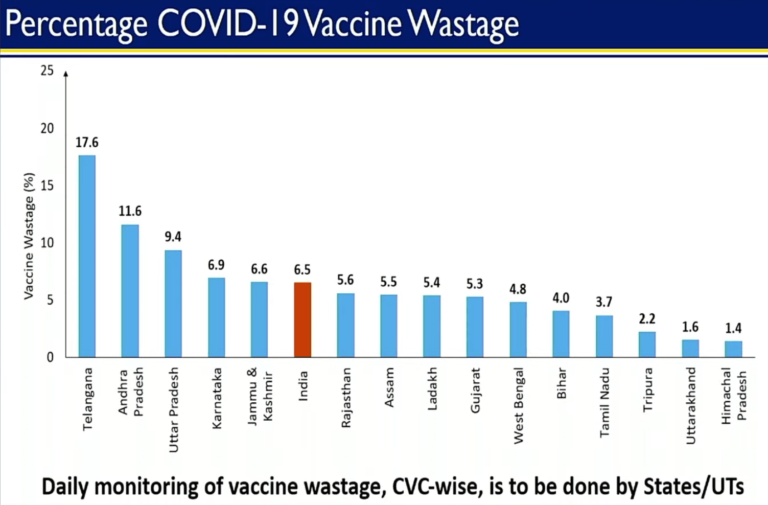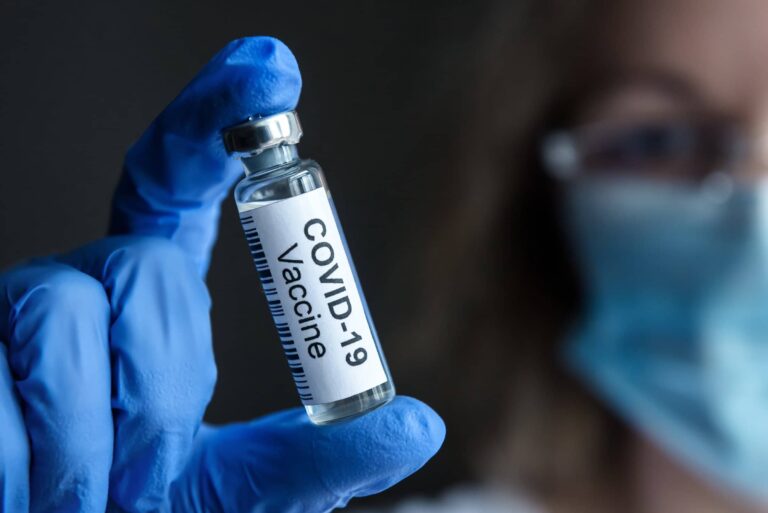India began the Herculean task of vaccinating her 136.64 crore people in phases on the 16th of January. The target of the Central Government was vaccinating 300 million citizens by July 2021, but a report published by Al-Jazeera on the 24th of May stated that only 43 million people had received both doses so far.
While we have administered 195 million doses till date, the number of shots being given per day has been steadily declining. On the 26th of April, the country was administered 3.2 million doses daily, but this number stood at 1.5 million shots a day on May 22nd.
Several states like Maharashtra, Rajasthan, Karnataka, and Chhattisgarh have had to halt their vaccination drives in the age group 18-44 on account of vaccine shortages. Another problem that has arisen is the lack of second doses for citizens above the age of forty-five. What has caused the vaccine crisis? And who is responsible for this shortage?
The Export-Import Factor
The first step towards understanding the chaos surrounding the world’s largest vaccination drive is talking about the two vaccines in circulation right now. The Pune-based Serum Institute of India (SII) is the producer/developer of the Oxford-AstraZeneca vaccine known as Covishield in India. The second vaccine- Covaxin, is being manufactured by the Hyderabad-based Bharat Biotech.
India is the world’s largest vaccine manufacturer and has shipped 64 million doses to 86 countries. While some of the shipments have been gestures of goodwill, others were commercial agreements or sent under the COVAX scheme led by the World Health Organization. In March 2021, when COVID resurged in India, the government stopped all exports of the AstraZeneca temporarily on account of home demand. Currently, no doses are being sent out of India.
The temporary curbing of the export of raw materials from the United States puts the production of vaccines (Covishield and Novavax) at risk in April. The SII imports several essential materials including bags, filters, and adjuvants from the US.
Adar Poonawalla took to Twitter and tagged the President’s office, urging them to lift the ban. Joe Biden’s invocation of the DPA (Defense Production Act) threatened the supply chain of vaccines, but the embargo was lifted towards the month-end amid rising cases in India.
Production and Use
The SII has claimed that it produces 60 million doses of Covishield a month, and Bharat Biotech states that it has a stockpile of 20 million doses. However, availability for use does not follow production immediately. Lav Agarwal, the Joint Secretary of the Union Health Ministry clarified the same when he explained the process of vaccine distribution.
It takes one week to produce a vaccine and run sterility tests. This vaccine is released in batches which are sent to the Central Drugs Laboratory for testing. Once this testing is completed in Himachal Pradesh, the vaccines are distributed across the supply chain of India. The gap between manufacture and use is considerable.

Furthermore, vaccine wastage continues to be a problem in states like Jharkhand, Chhattisgarh, Madhya Pradesh, Jammu and Kashmir and Tamil Nadu as per health ministry data.
The reports claim that every one in three vaccines is wasted in these states despite repeated instructions by the Centre to keep wastage below one percent. Factors that render vaccines unusable are:
• Expiry dates
• Temperature requirements not met
• Dropping open vials in water
• Entire doses not being injected from vials
Implementation of vaccination drives requires immense focus and the states cannot afford to lose any doses. (It must be noted that Jharkhand, Chhattisgarh, and Tamil Nadu have refuted the allegations of the Health Ministry.) Several state governments have already launched global tenders, but have been rebuffed by foreign vaccine producers who are in talks with the Centre.
Projections and Pipelines
The official website of the Bhartiya Janata Party estimates 216 crore vaccine doses from August to December in 2021. These projections are based on the two existing vaccines and the other six which are still in their trial/developing phase.
1) Covishield
2) Covaxin
3) Bio E Sub-Unit Vaccine
4) Zydus Cadila DNA Vaccine
5) NOVAVAX
6) BB Nasal Vaccine
7) Gennova mRNA Vaccine
8) Sputnik Vaccine
Besides these, US drug-maker Pfizer is expected to roll out its vaccine in India next year. Pfizer was ready to offer 5 crore doses in 2021 itself, provided the regulations were relaxed. Moderna is also building a relationship with Cipla.
New Delhi has pledged to fast-track approvals for foreign vaccines, and a proposed solution to avoiding lengthy trials can be monitoring the first 100 recipients of these overseas doses.
A few opposition party members, as well as health experts, have pegged the estimates of the government for the next quarter as overly optimistic.
One of the reasons behind their skepticism is that five vaccines are yet to complete all their trials and tests. But on a positive note, the Sputnik V is set to enter the Indian market soon. Apollo hospitals have stated that Sputnik will be administered from the second week of June.

Key Things to Know Right Now
• The government has placed fresh orders of both, Covishield, and Covaxin which will be delivered in May, June, and July.
• Home demand for vaccines has been prioritized and all exports have ceased.
• Attempts are in a swing to cinch the deal with Pfizer.
• Sputnik V is expected to ramp up the vaccination drive.
• The second wave of COVID in India is in a down-swing as cases decline across states.
Written By – Mudra Joshi
Edited By – Ginia Chaterjee
